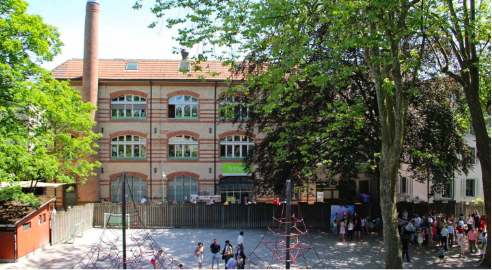The line between university and the working world is getting blurrier—fast. With tech companies worldwide struggling to fill critical roles, even students still deep in their studies are being pulled into real-world projects. Platforms, internships, and programs backed by a staff augmentation services company are now bridging that gap, giving Swiss students unprecedented access to international work experience.
Swiss Education Meets Global Demand
Let’s face it: Switzerland has long been known for its top-tier universities and multilingual talent. But now, the global talent crunch—especially in tech—is putting a spotlight on Swiss students in a whole new way. Companies from the U.S. to Singapore are opening their (virtual) doors to students with solid programming skills, UX instincts, or even early-stage AI understanding.
No, this isn’t just about internships anymore. It’s project-based collaboration, real-time problem solving, and exposure to teams spread across three continents.
What’s Causing the Global Shortage?
Blame it on the velocity of virtual transformation, the explosion of AI startups, or definitely the truth that greater organizations want software program builders than ever before. The result? Companies are transferring from conventional hiring to greater agile models—like workforce augmentation—wherein short-term, high-ability assistance is simply as valued as full-time roles.
For students, this indicates possibilities come in advance and greater often. And those who’ve built portfolios or contributed to open-source work? They’re getting noticed.

Education That Adjusts to Reality
Swiss institutions have a reputation for academic excellence, but there’s a growing recognition that curriculum alone isn’t enough. Partnerships with tech companies, accelerator programs, and even course-integrated sprints are becoming more common.
In Zurich, one university’s computer science track now includes collaboration with a blockchain startup. In Lausanne, machine learning students recently participated in a cybersecurity challenge designed by an Australian firm. The lines are blurring—in the best way.
And it’s not just tech majors. Product design, project management, and digital marketing students are also landing spots on global project teams. Some programs are now built around flexibility, knowing that students might be syncing with colleagues in New York or Bangalore at 9 PM.
The Role of Staff Augmentation in Education
Think of staff augmentation as a flexible workforce solution that doesn’t just benefit companies. Students, especially those eager to break into highly competitive fields, gain real deliverables for their CVs, earn a paycheck, and build confidence before graduation.
For example, a SaaS company may need someone for a 6-week QA sprint. They don’t have the budget—or need—for a full-timer. That’s where staff augmentation comes in. A vetted student, mentored remotely, fills that role and walks away with a recommendation letter and hands-on experience in agile product cycles.
Companies like DigitalSuits make these partnerships happen, matching companies with talent, including up-and-coming student developers or marketers. This kind of hybrid learning is no longer an exception—it’s quietly becoming a new normal.
Real Students, Real Results
One ETH Zurich student got looped into a data visualization project for a Dutch analytics firm. What started as a summer job turned into a recurring gig every winter break. Another, based in Geneva, joined a UI/UX taskforce for a climate-tech startup in Canada—remotely—just by posting her prototype on GitHub and joining a hackathon channel on Slack.
These aren’t edge cases. With the rise of remote-first companies and asynchronous workflows, more and more students are logging in from their dorms and contributing to products used around the world.

Balancing Study and Work
Of course, this shift raises questions. Can students handle real-world deadlines and exams at the same time? The short answer: it depends.
Many schools now offer academic credits for professional experience. Some students manage projects during semester breaks. And yes, burnout is a risk—but the payoffs are real. When graduation day comes, these students aren’t just diploma-ready. They’re job-ready.
Even for those not seeking full immersion, exposure to global workflows, codebases, or marketing frameworks can be a huge step forward. It makes theoretical knowledge more tangible, and career paths more visible.
The Future: Global Classrooms, Global Teams
In 5 years, we can also additionally appearance returned and marvel why we ever separated schooling from real-international experience. Already, the neatest universities are questioning much less like ivory towers and extra like launchpads.
For Swiss students, this second is golden. High academic standards, global fluency, and a developing virtual footprint lead them to a number of the maximum in-call for younger specialists at the market—even earlier than the ink dries on their diplomas.
And for companies navigating a global talent drought? Investing in emerging talent through staff augmentation isn’t just practical. It’s visionary.


